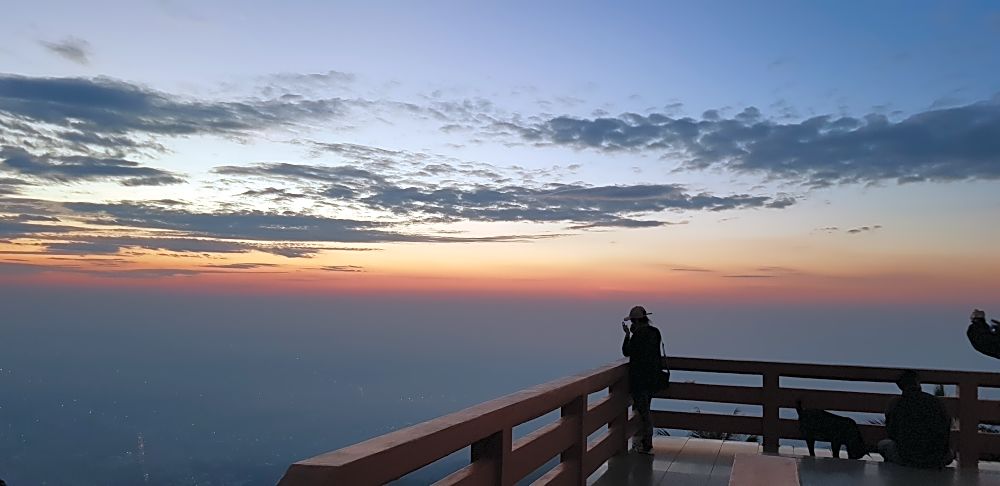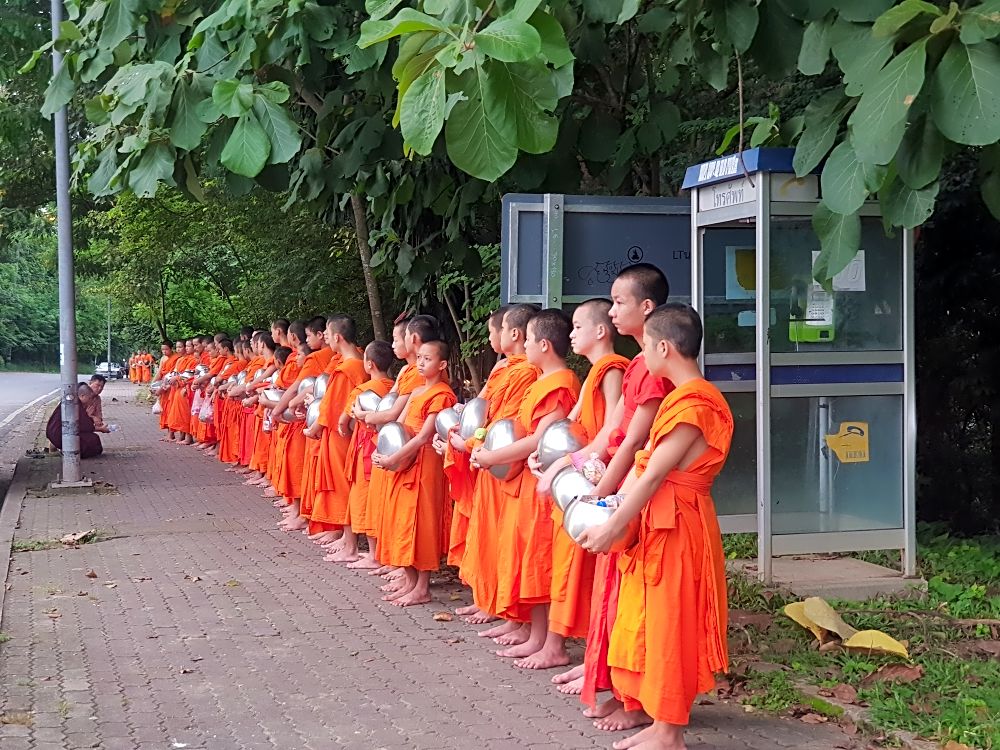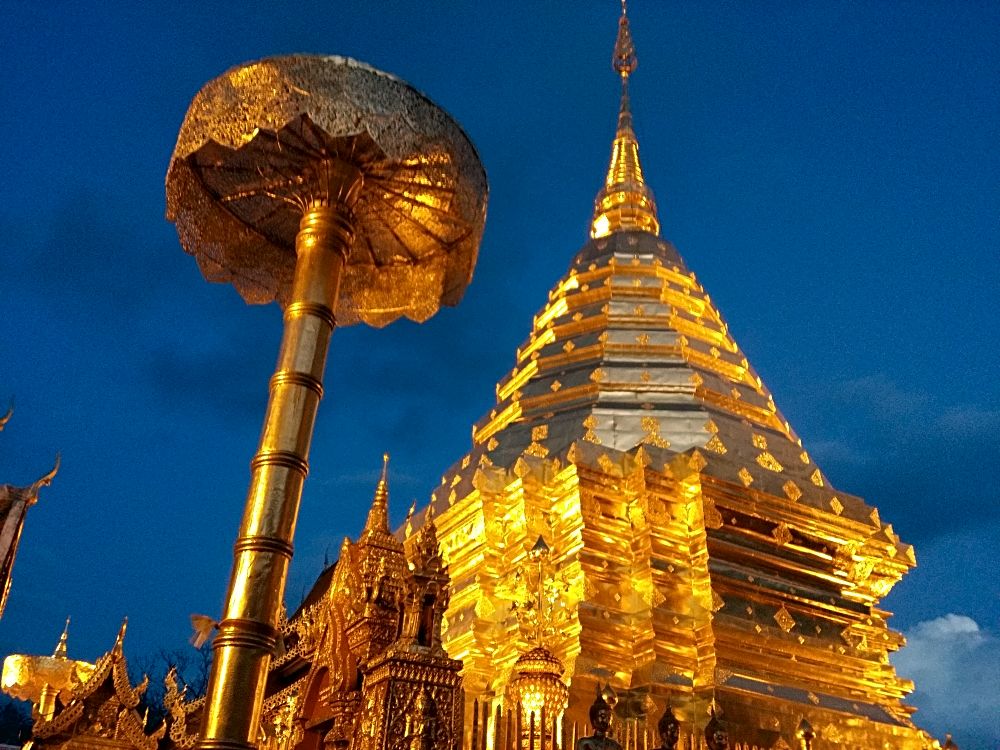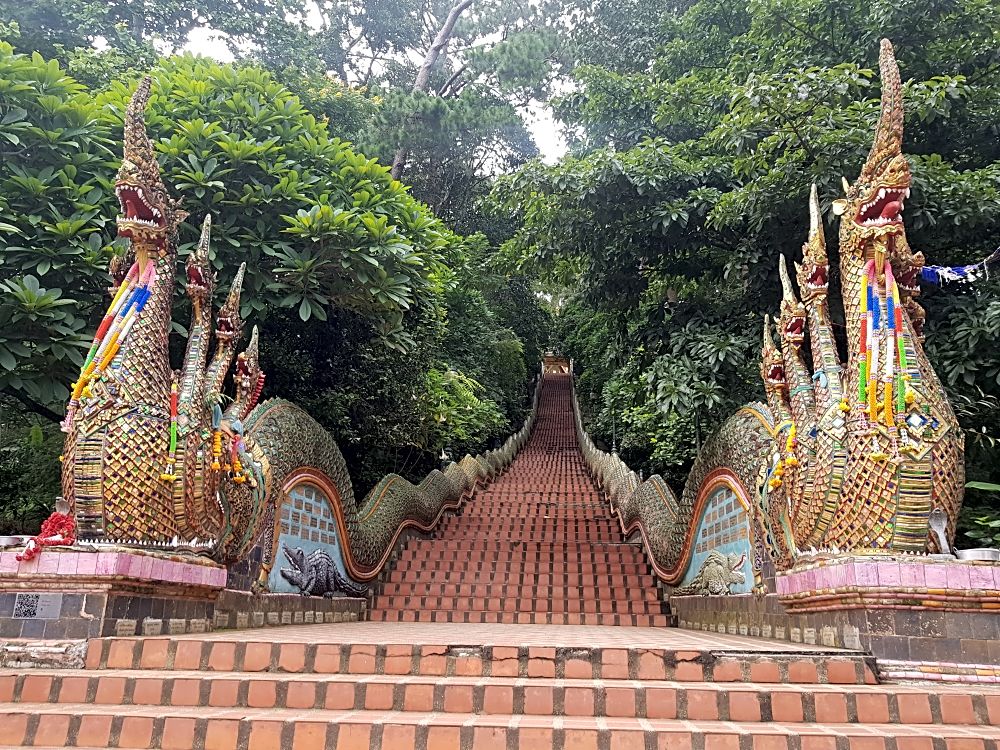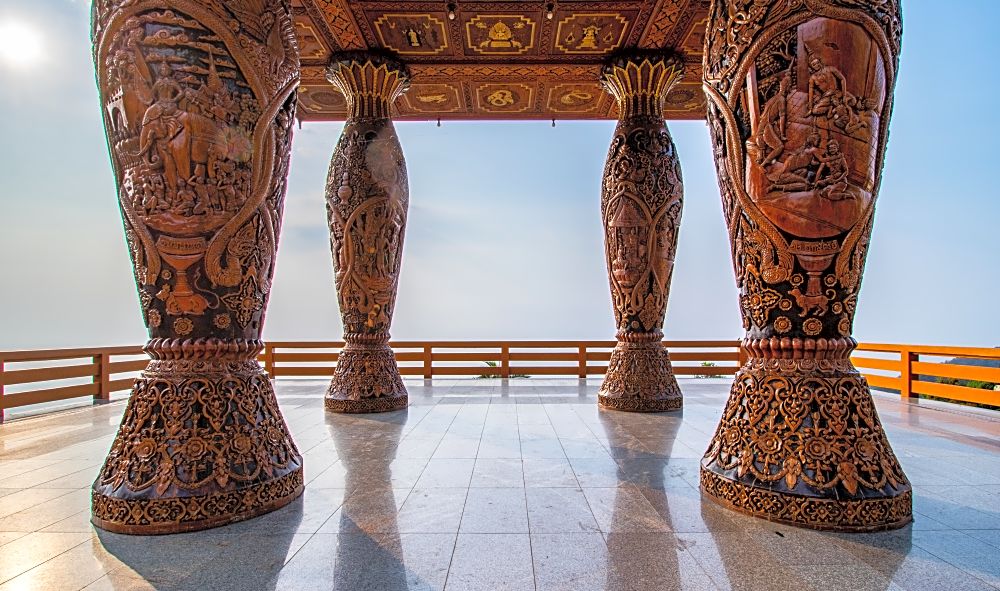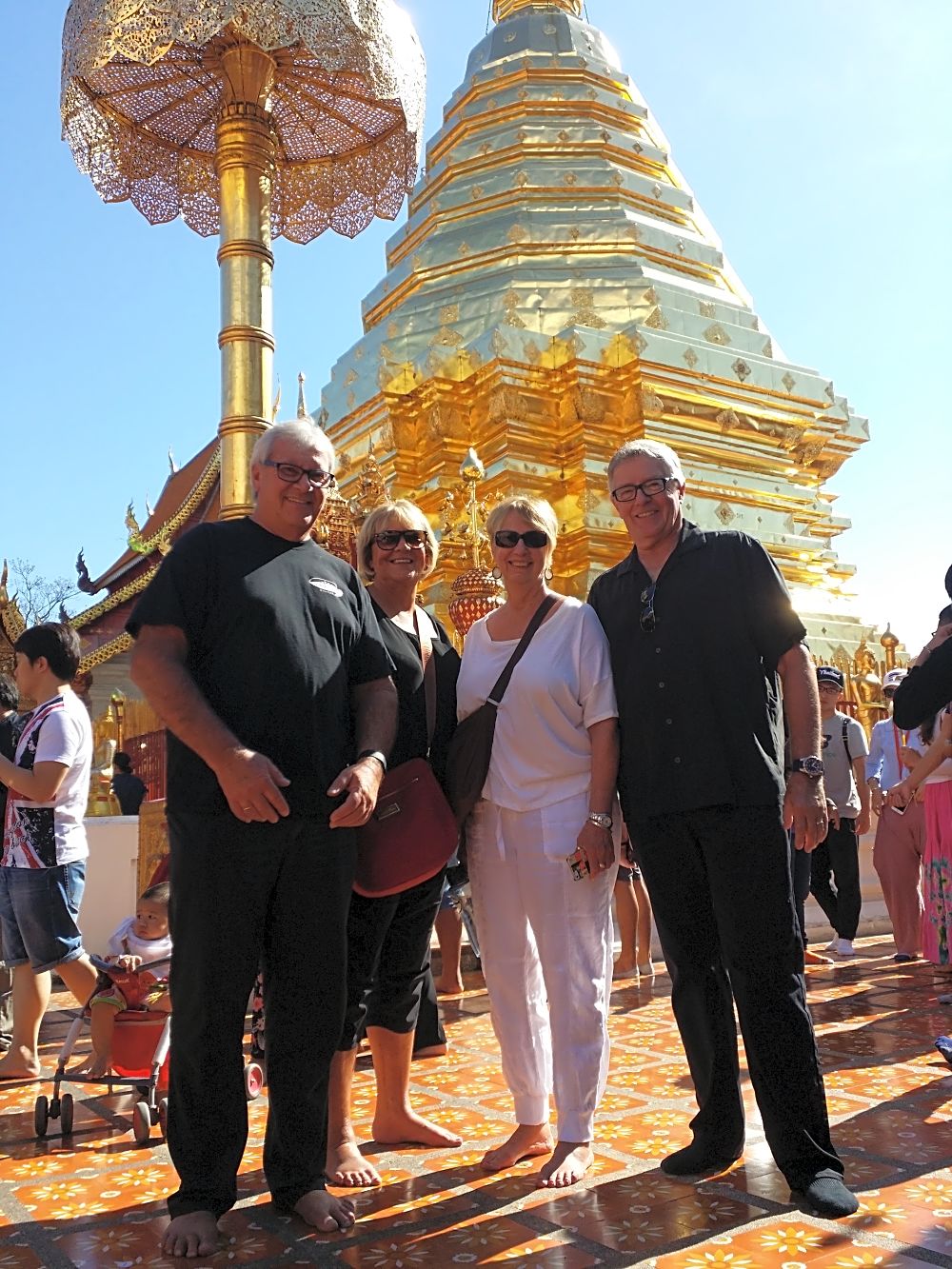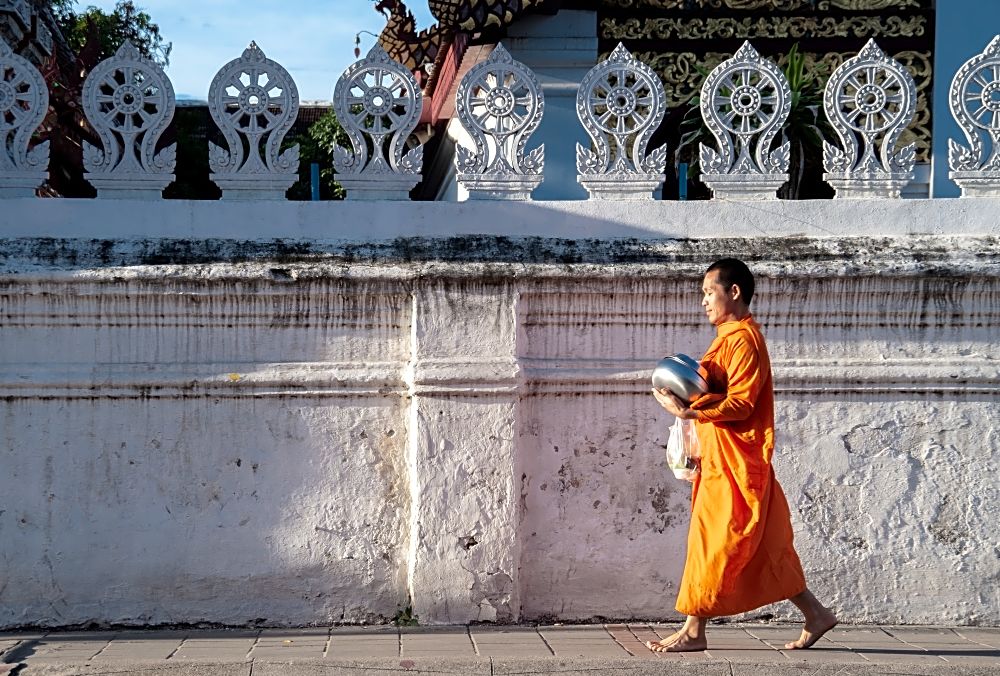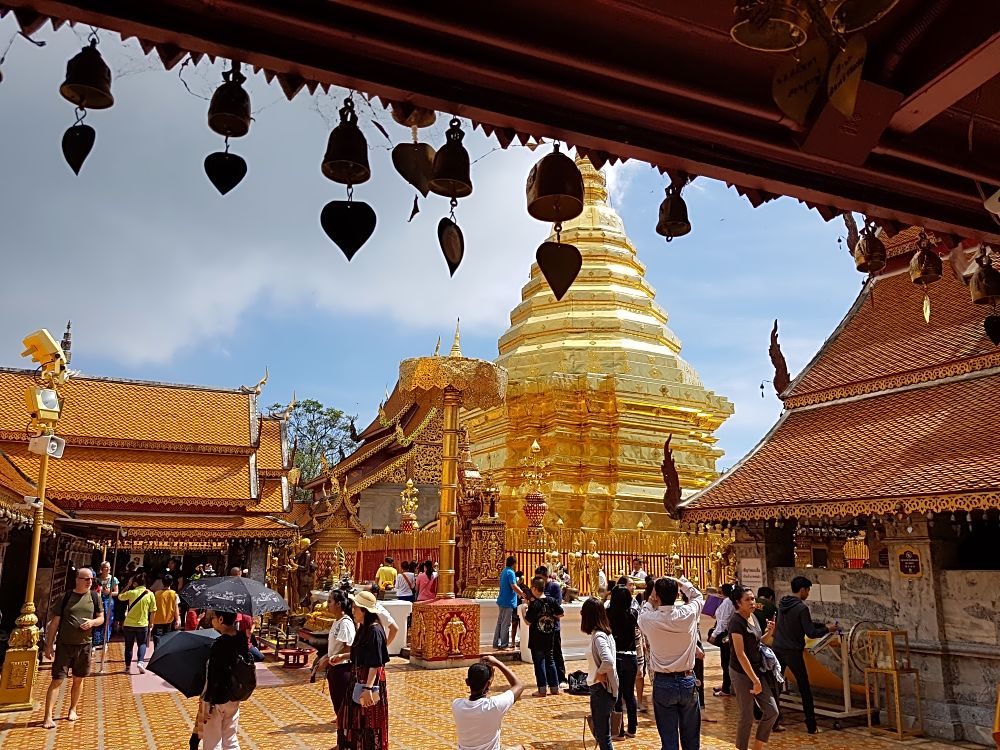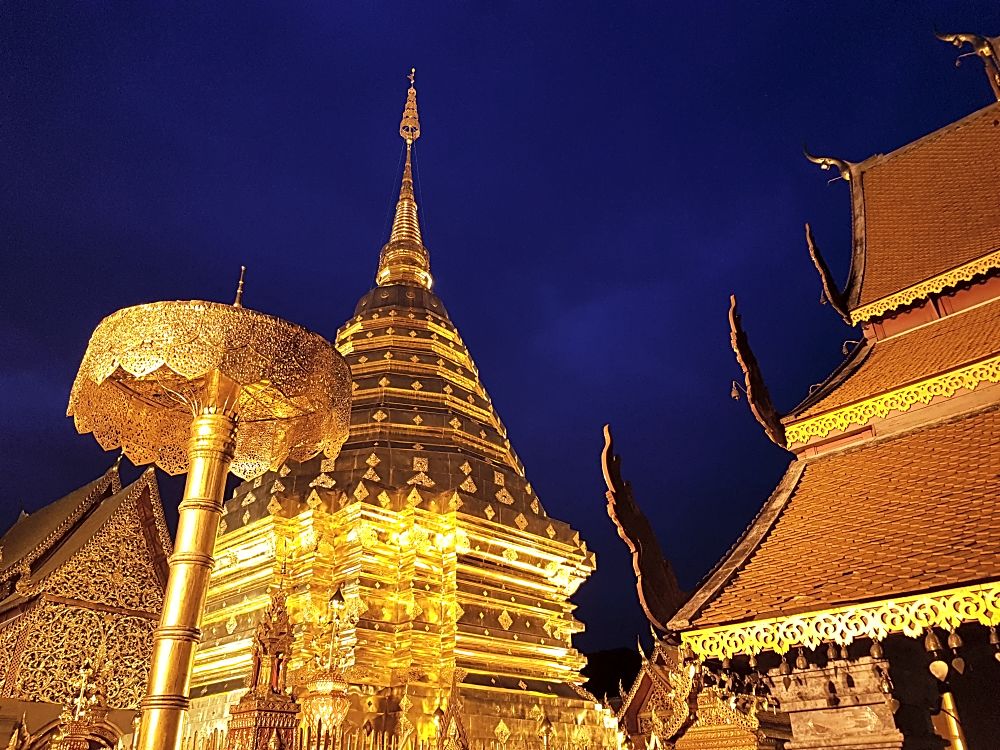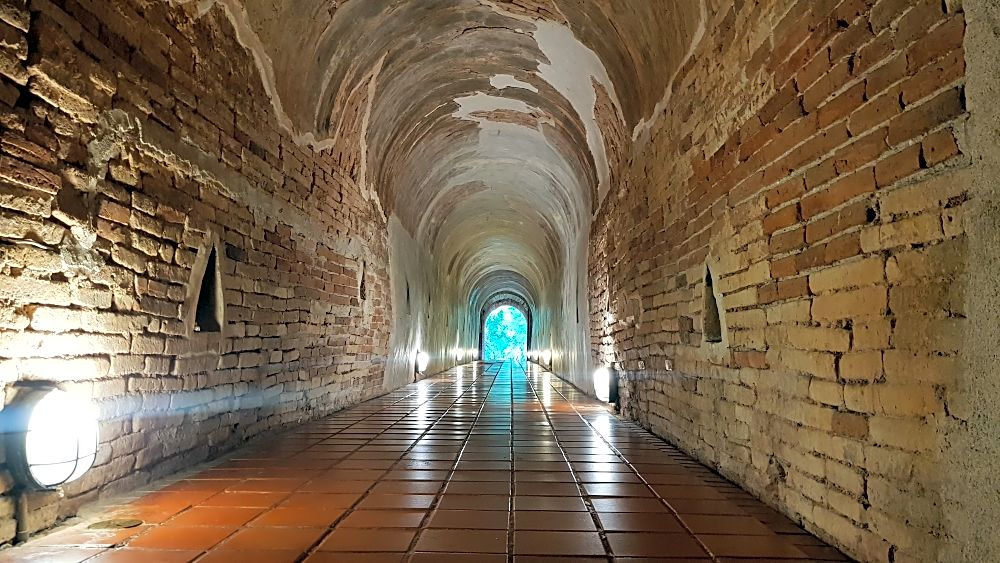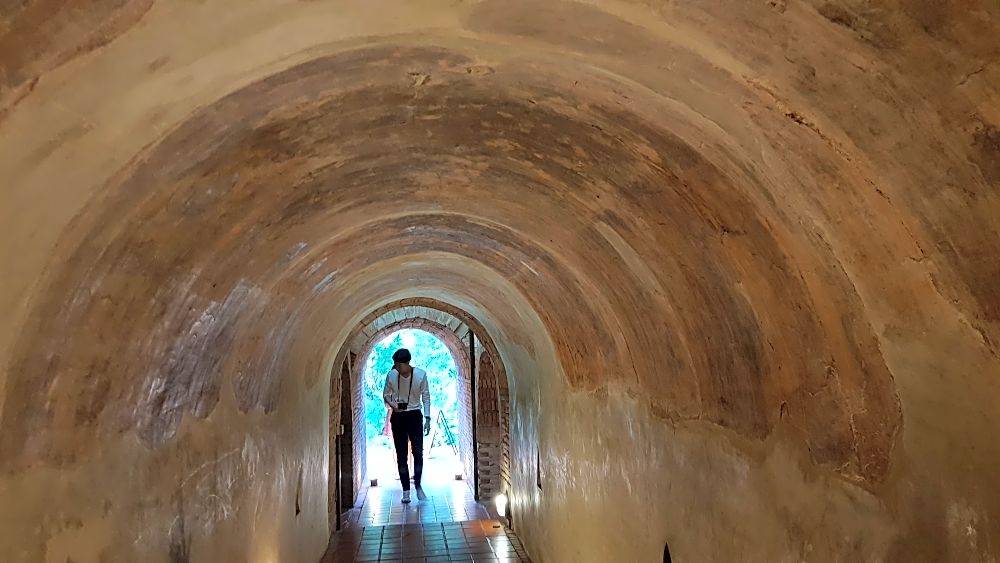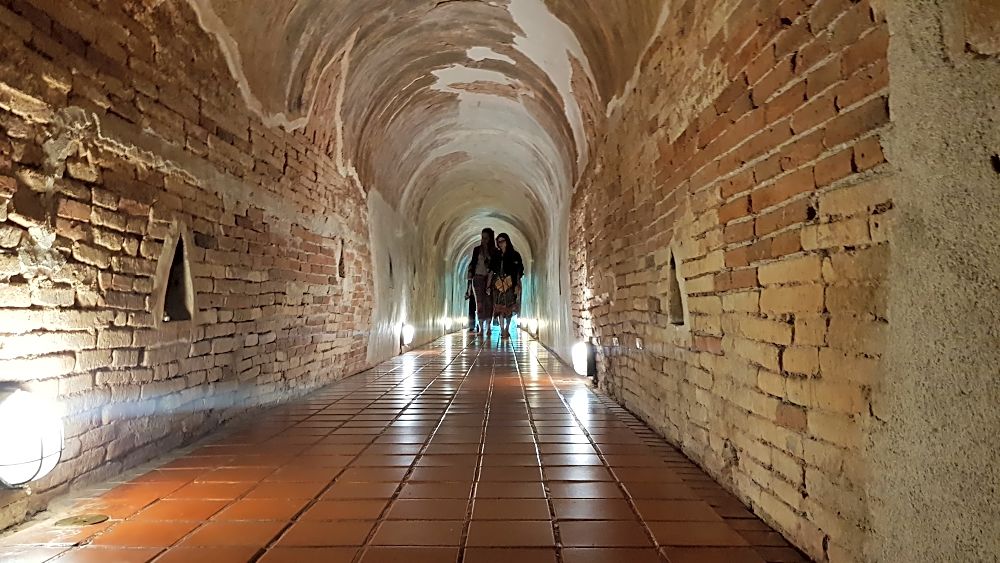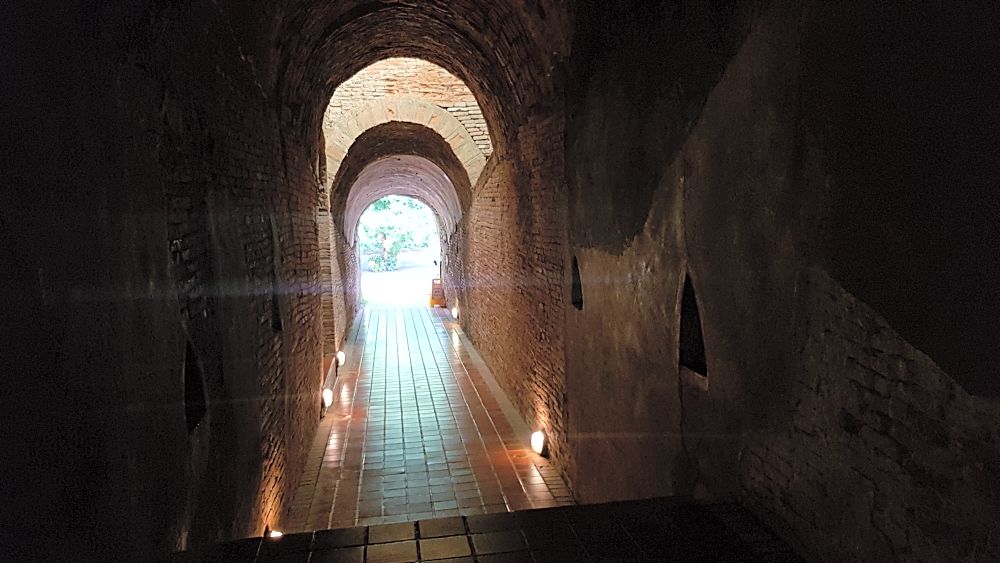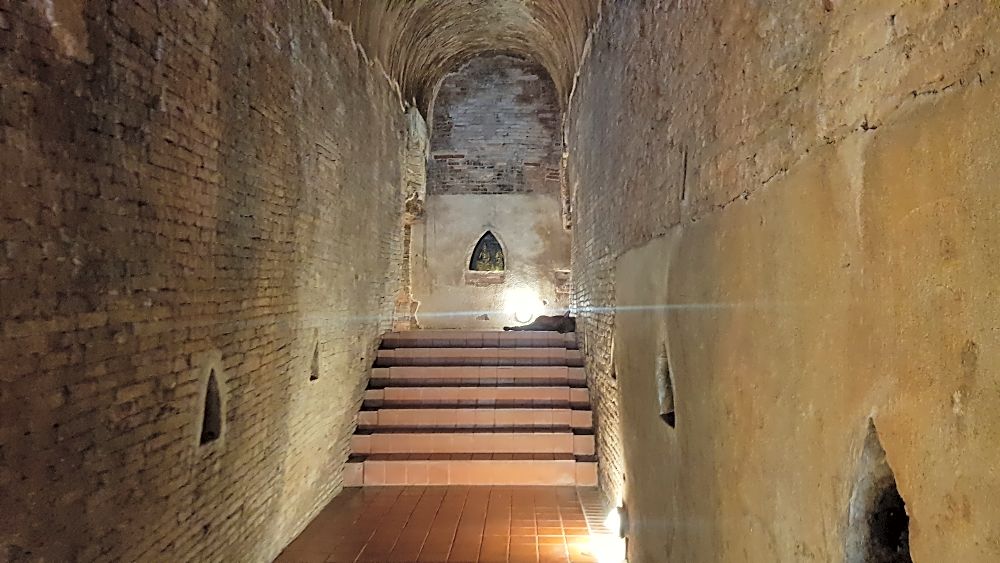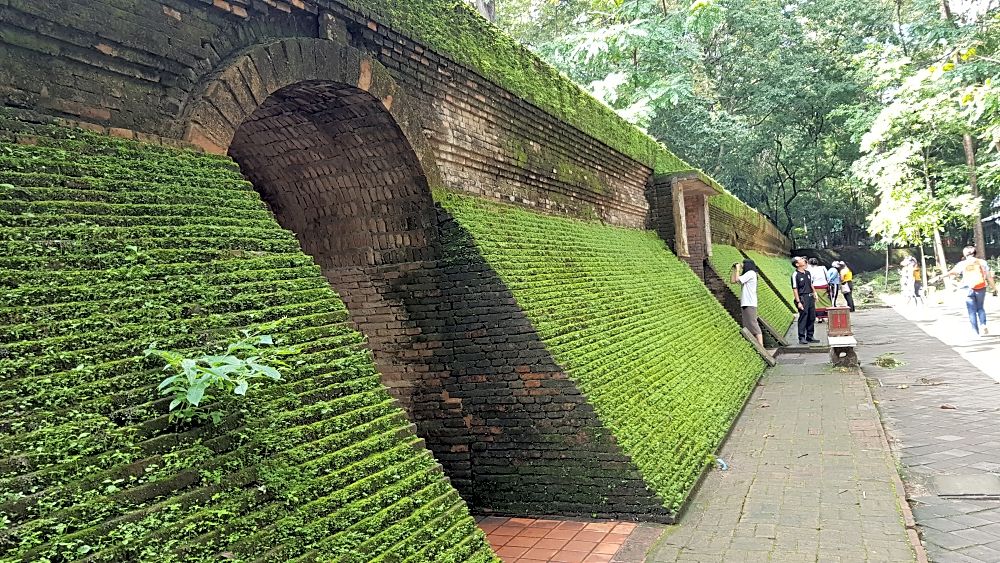Sunrise Tour Doi Suthep
This is a memorable experience! Watching the sunrise from the viewpoint at Wat Phra That, Doi Suthep. It offers an amazing view of Chiang Mai city and the effect of the rising sun is breathtaking.
This is a memorable experience! Watching the sunrise from the viewpoint at Wat Phra That, Doi Suthep. It offers an amazing view of Chiang Mai city and the effect of the rising sun is breathtaking.
As it is early in the morning, you will be able to enjoy the peace and quiet while taking beautiful photos of Chiang Mai from the viewpoint.
Wat Phra That is also a very peaceful place for meditating and relaxing. You will be awed by the magnificent pagodas at the temple. There are also beautiful statues, bells, a museum, and shrines.
Afterward, you will get experience real Thai culture by making merit, by giving alms or offering food to monks, and receive a blessing in return. This is a daily practice in which monks from the temples walk the street at the base of Doi Suthep to collect alms from locals who make merit.
Then, enjoy a traditional Thai breakfast. Here, the locals eat sticky rice with meat on sticks or rice soup with eggs, chicken or pork. You can also try the authentic Chiang Mai curry noodles called Khao Soi.
Next, you will visit Wat U-Mong, the jungle temple, which is primarily used by monks and people as a meditation and self-reflection retreat. Ths temple features fantastic man-made underground tunnels called U-Mong.
Please remember to dress appropriately as you would do when you visit any temple in Thailand. Respectful behavior is also expected as it is a sacred place.
Itinerary:- 5:00 am Pick you up from your hotel in an air-conditioned van.
- Drive to the viewpoint at Wat Phra That Doi Suthep.
- Watch an epic sunrise.
- Visit the temple before leaving for the daily ceremony of alms.
- Enjoy an authentic Thai breakfast.
- Visit Wat U-Mong
- 9:00 am Drop off at your hotel.
- English-speaking tour guide.
- Private air-conditioned vehicle with driver.
- Bottled drinking water.
- Breakfast.
- Travel insurance?
- Entrance fees, elevator fees?
- Souvenirs
- Other tours not mentioned in the above itinerary
- Personal expenses
- Lunch and beverages
Doi Suthep
Doi Suthep, together with Doi Pui, are twin peaks of a granite mountain, 15 kilometers (9.3 miles) west of Chiang Mai city. “Doi” means mountain in Thai. It is surrounded by mostly deciduous forest, with evergreen forest above this elevation. Hmong hill tribe people live in the surrounding area.
This mountain is part of the Doi Suthep-Pui National Park, which was established in 1981. It has an area of 261 square kilometers (101 sq mi). The park includes the Wat Phra That Doi Suthep temple and the Bhubing Rajanives Palace, further up the mountain. The top of the mountain offers panoramic views of Chiang Mai city and its surroundings.
When people mention the name Doi Suthep, they are usually referring to a Buddhist temple, Wat Phra That, which sits around 1,060 meters (3,480 ft) up the mountain.
Wat Phra That Doi Suthep
Wat Phra That is one of the most important temples in Chiang Mai. Situated 15 km (9.3 miles) from Chiang Mai city, the Theravada Buddhist temple is a sacred site for many Thai people. It is said that the temple was built by a Burmese architect and the first stupa was built in 1383. Over the years, the temple expanded with many more holy shrines built. In 1935, a road was constructed to provide easier access to the temple.
From the temple's base, visitors can climb 309 steps to reach the pagodas or take a tram. For the more adventurous, it's also possible to hike up to the temple from the city following the Monk's Trail.
The name of the temple, Wat Phra That, describes what you will find there. “Phra” refers to an honorific Buddha image, and “That” means a relic. “Phra That” therefore means that there is a relic of Buddha in the temple. In this case, it's a relic of half of Buddha's shoulder bone, which is found in the rounded portion of the Chedi. The holiest structure on the temple grounds is the original gold plated chedi. Also found on the site are pagodas, statues, bells, a museum, and shrines. Many temples in Thailand display influences from both Buddhism and Hinduism. Here, there is a model of the Emerald Buddha and a statue of the Hindu God Ganesh.
The “naga” or dragon-lined steps are the longest naga balustrade in Thailand. Upon reaching the top of the steps, one will see the white elephant statue commemorating the story behind the Wat. The closest entrance to the inner ring can be found on the Northside of the complex. As you enter, the immediate view is the 24 meters (79 feet) high gold-plated chedi. This spire is typical of Northern Thailand’s chedis. The structure is greatly influenced by Sukhothai art except for the tiered “chatra” (umbrella) at the top, which was influenced by two centuries of Burmese occupation.
An aspect of Buddhist architecture is the tiered and angular-shaped chedi that is found all around Thailand. The tiers represent the level of heavens that one must ascend in order to achieve Nirvana. It also depicts the hierarchy associated with a monarchy. The main focus of Threvada Buddhism is to rid oneself of unwholesomeness. To achieve that one must focus on peace, lightness, and floating. This is why the architecture of the chedi was designed to create a feeling of weightlessness of the structure. The interior walls are filled with beautiful murals that depict the story of Buddha's life and travels. They also include Hindu aspects as well. The murals and decorations are of dark materials and therefore give the interior a dark ambiance. This is also due to the fact that the main lighting comes from the narrow vertical windows The narrow windows are not only for structural concerns but to also help with the ascension feel because they are actually trapezoids that are wider at the base. The interiors at Wat Phra That Doi Suthep also contain myriads of Buddha statues that come in all different styles and materials, which can also be seen within the courtyard.
Wat Umong
Wat Umong was built in the late 13th century by King Manglai of the Lanna dynasty. The temple is famous for its ancient tunnels and large chedi (pagoda). There are tunnels below the chedi with Buddhist images. These tunnels can be easily explored. The temple is also unique because the resident monks live in a very natural setting. It also is possible to stay to practice meditation and to learn from the monks.
